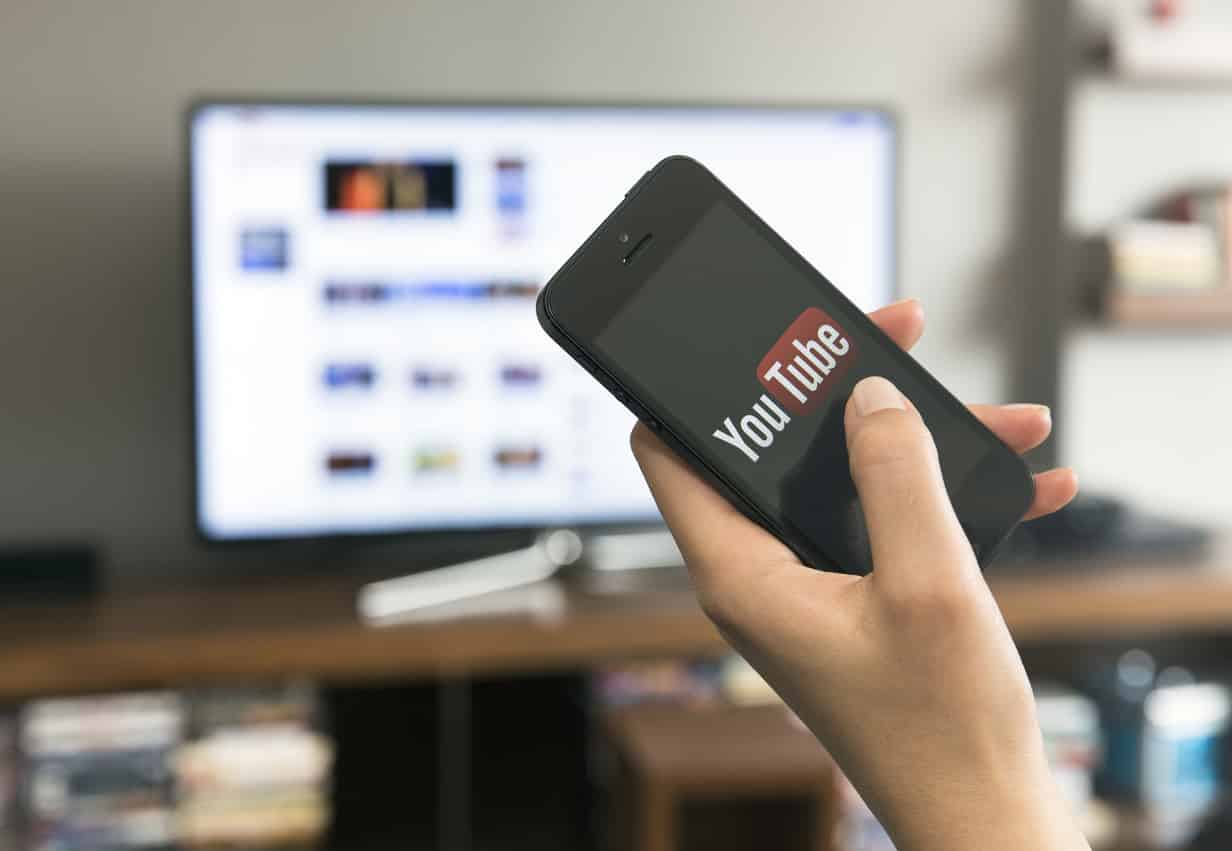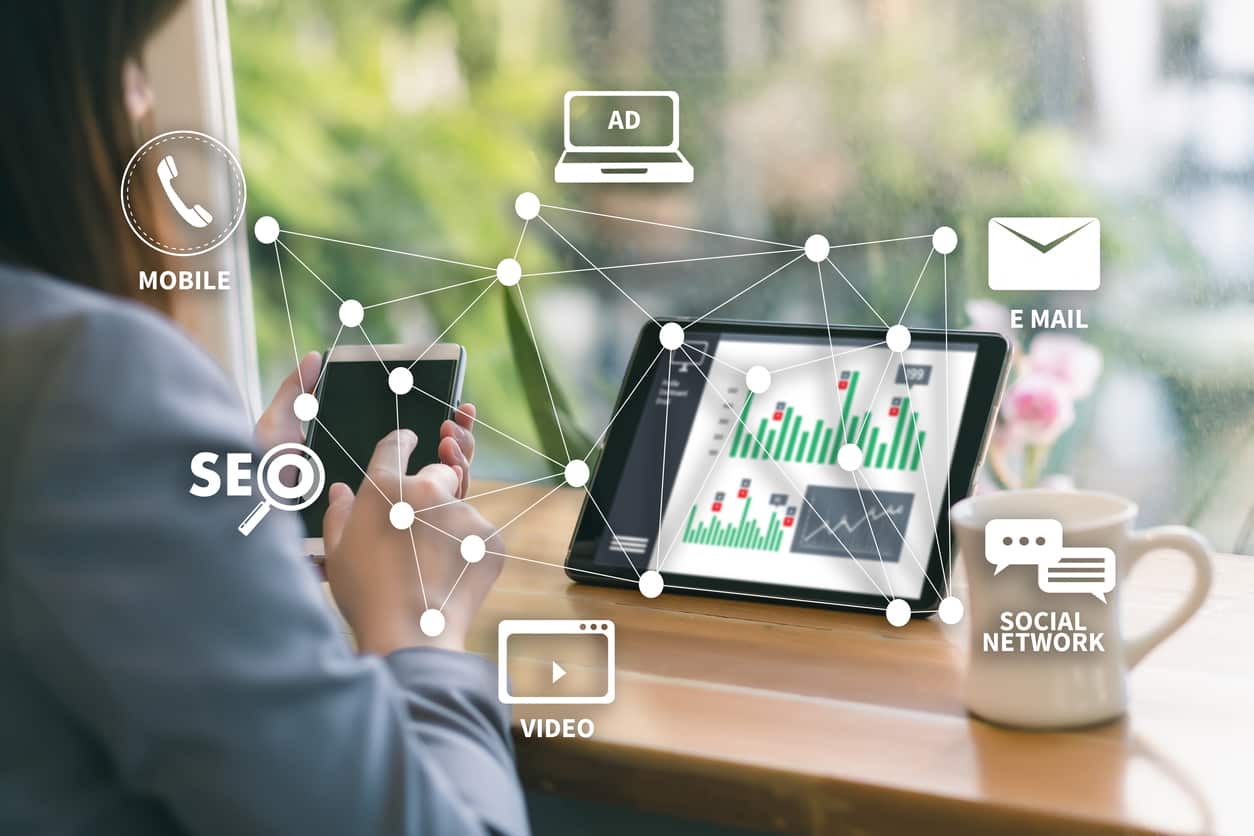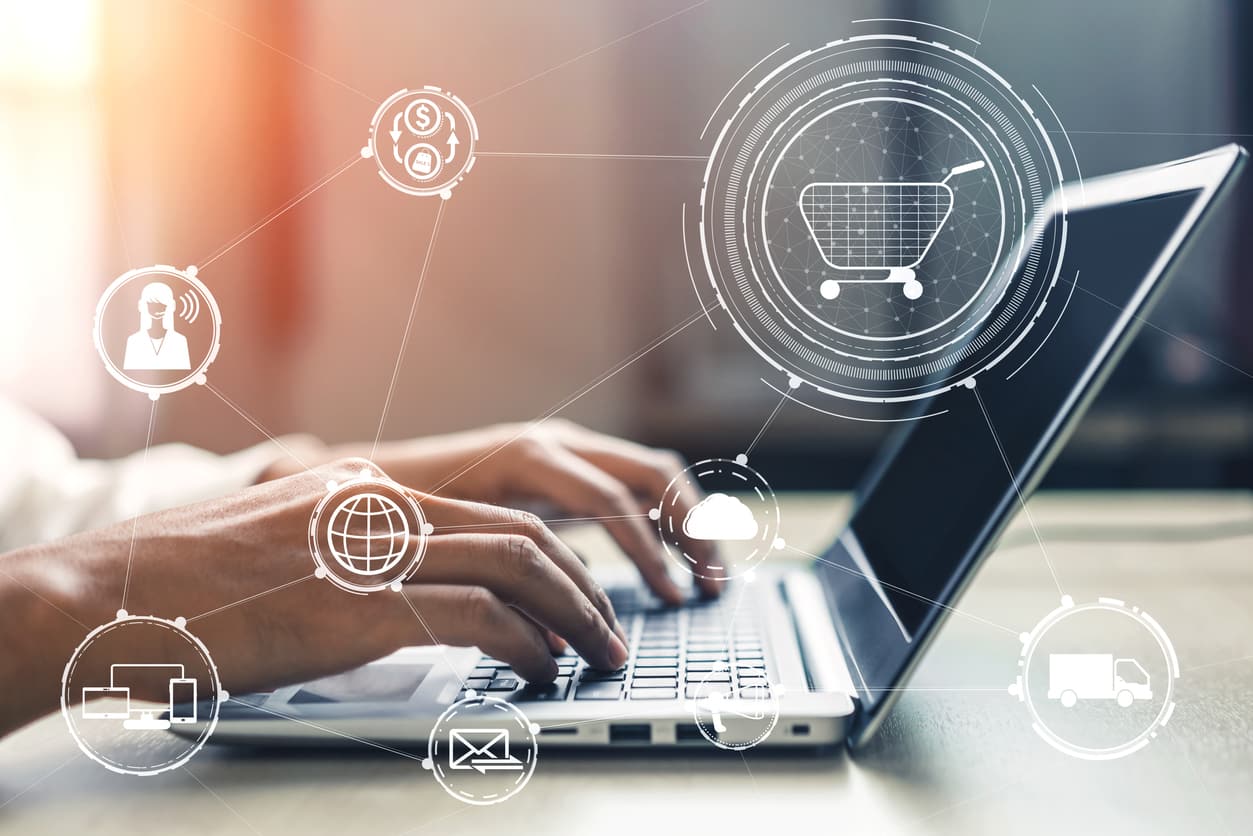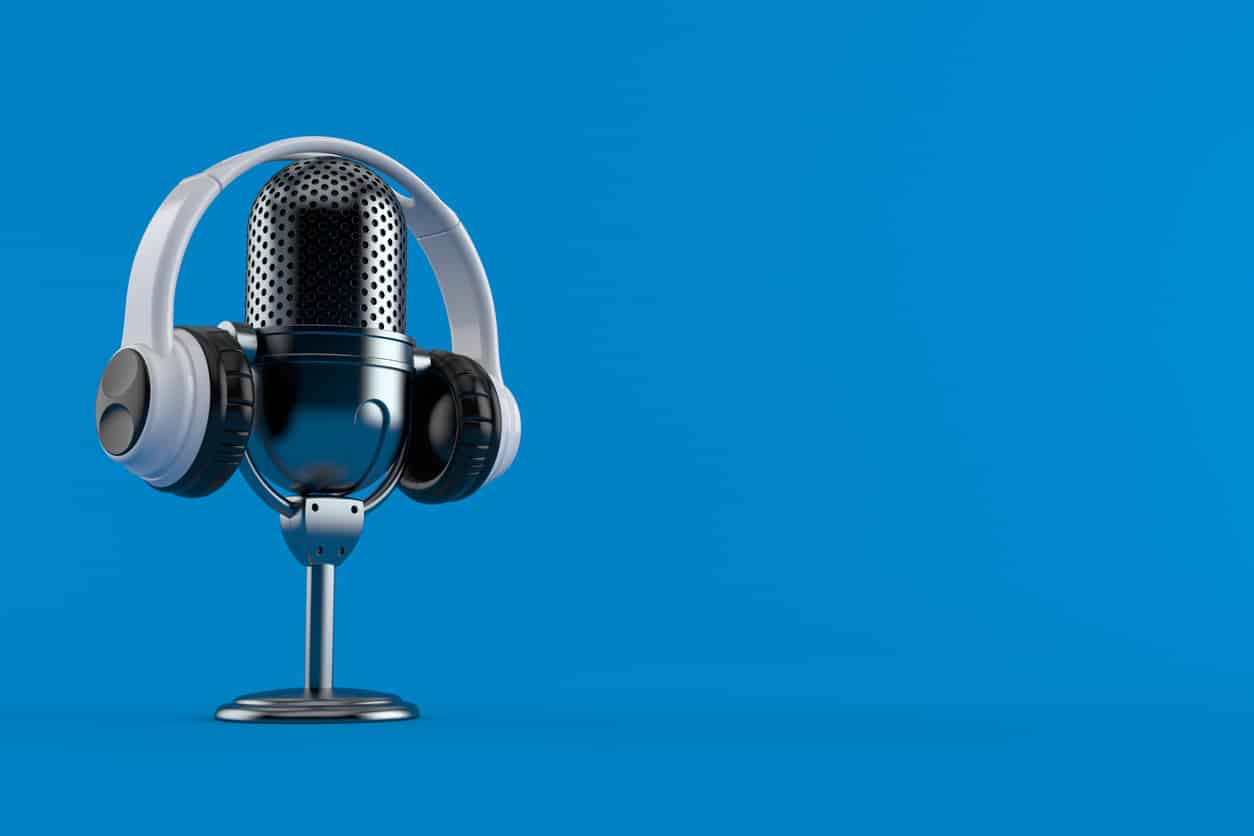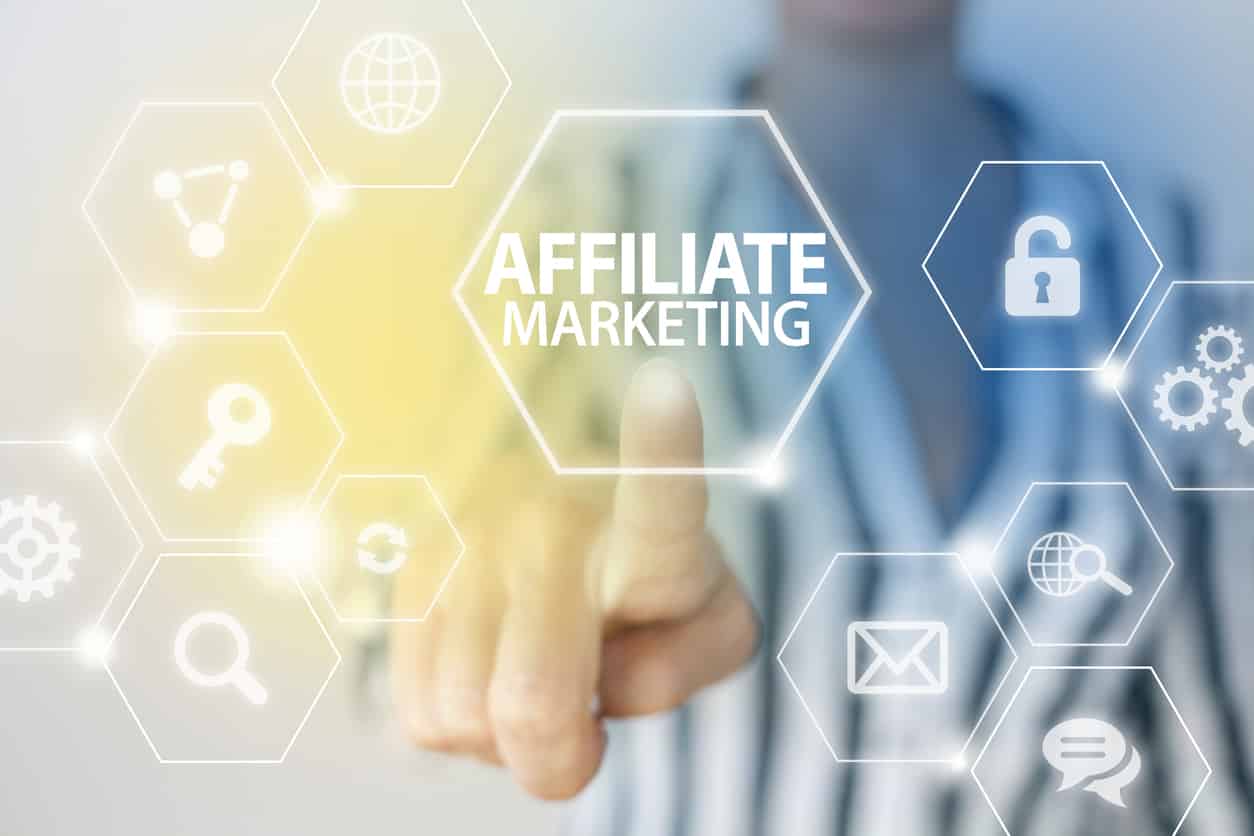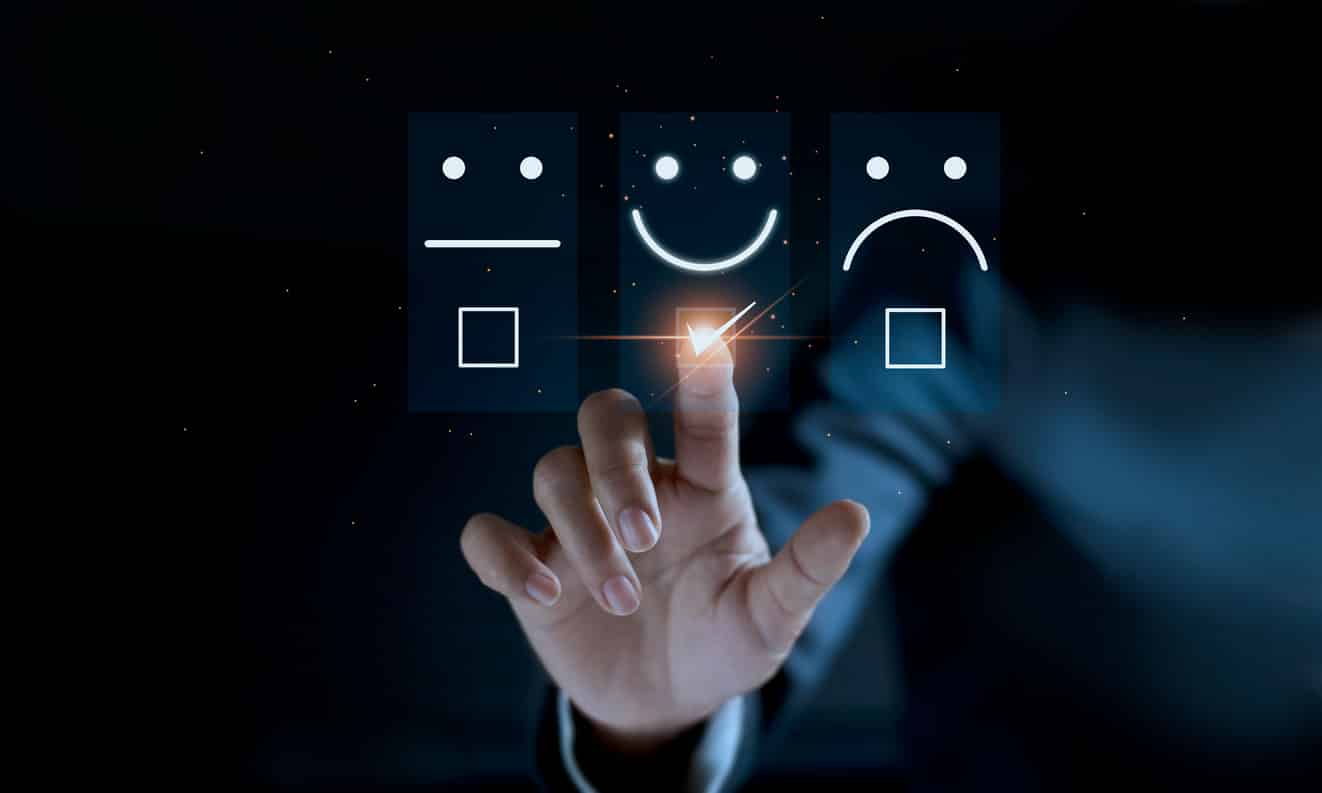The year 2020 has created chaos in our lives. Even now, in the year 2021, the pandemic returned, leaving a lot of businesses in havoc. As per the New Indian Express, almost half of the global CEOs believe that returning to normal will not be possible until 2023. Therefore, the current situation created by COVID-19 has resulted in the acceleration of digitization of operations and created a need for the next generation trends. During the pandemic, when physical stores are shutting down and are forced to close their operations, digital marketing is adopted as an alternative by many businesses. It can be said that COVID-19 has changed the way the company operates and shaped a new era of marketing, that is, Digital marketing.
Also Read: Regardless of COVID-19, Great Learning Provides an Ideal Platform for Transition
Nowadays, more and more companies migrate to online working models, which is only considered ‘the new normal’. This ‘new normal’ environment has given us some insights into the top marketing trends in 2023. Here is the list of few Digital Marketing trends which should be considered by the companies when configuring the digital marketing strategy for the coming years:
1. Live Streaming
Staying at home in the lockdown means not attending any events or not socializing with friends and family. This has led to an uprise in Livestreaming by people. Live Streaming is when a video is sent over the Internet in real-time, not recorded. This can be understood as live digital marketing used by marketers these days in their digital marketing strategies. This creates a better user experience and brings a sense of originality which connects business with their users. Live streaming helps in increasing user engagement with the brand.
The power of Live streaming can be estimated from these examples: Kim Kardashian has sold more than 150,000 bottles of her perfume within minutes, with the help of Live streaming only. Isn’t it great!
Also Read: The Digital Marketing Lessons we can Learn from the Kardashians
Implementing the live streaming strategy in the marketing strategies is more impactful than you can ever imagine. This is proved by the fact that 90% of the potential customers believe in the business when the information is conveyed through a video. Facebook gets more than 8 million views every day. Its views surged in the COVID-19 lockdown period by 50%, while Instagram live streaming views spiked by 70%. Live streaming can be used to arrange personalized interactions with the customers, improve customer service, announce any new product or service, or organize Q&A sessions with the customers. Some of the most used platforms or tools for Live streaming are Facebook Live, Instagram Live, Twitter Live, YouTube Live, Amazon Live, Vimeo, Twitch and many more.
Why is Live Streaming becoming so popular? The answer is simple. The brands have a huge audience that builds up an opportunity to reach them out and attract an audience that is new and not even connected to the brand yet. The rise of smartphones is the second biggest reason. People can watch live streaming sessions even at work, or at lunch, or anywhere.
Also Read: Everything You Need to Know about Instagram Videos
2. User-Generated Content
User-generated content is a powerful trend to target millennials and Gen Z users. Nowadays, many brands are encouraging their audience to share unique content in return to which they are offered discounts, prizes, or free products.
In 2019, Apple started a contest to create awareness about iPhone’s camera quality. The contest involved users and asked them to submit their best shots clicked with iPhone with the hashtag #ShotOniPhone. The panel of judges then reviewed about a 15-day long contest, and 10 winning photos were selected, which were featured on the billboards of selected cities, in the Apple stores and online.
#AtHomewithOreo campaign in the pandemic COVID-19 is another example of the success of User-Generated Content (UGC). The campaign attracted 249 million impressions and 29 million video views. The brand encouraged its users to share their recipes with Oreo on Facebook and Instagram handles. The campaign gained an organic reach of 400000 people. As per the associate Director of Mondelez India (Oreo biscuits), the campaign started to reduce the pandemic gloom and create playful moments among families.
The User Generated Content (UGC) helps in building and strengthening the communities. It helps in bridging the gap between brands and users and brings them on the same platform. Brands can also embed Instagram feed on their website to showcase UGC and enhance customer engagement. As per a survey, 90% of the shoppers believed that User-Generated Content had influenced their buying decision. UGC can be in the form of testimonials from users, posts and images created by users or comments on blogs. UGC has been influential and will continue to be a compelling digital Marketing trend in 2024.
Also Read: Top Industries Likely to Survive the Pandemic & Shape Hiring Trends Following Covid-19
3. Zero click searches and Featured snippets.
For the past many years, the brands have been focussing on gaining the number 1 position on the Search Engine Result Pages. Nowadays, in 2024, the main goal of the brands have become to shift the brand’s visibility to “position zero”. The featured snippets appear on the prevalent position “Position zero” in the SERP. Look at the image below:

The highlighted and featured snippet is Position Zero, as it is displayed at the top of the Search Engine Result Page, the leading organic result. This position portrays the best answer to the query asked on Google. Google pulls out the content from the first 10 organic results and displays it on Position Zero. The featured snippets mostly appear in return to the questions, including terms like who, what, how, when, and more. The featured snippets can be in paragraph form, in a list form, or table.
Now, the question is why position zero is so significant for marketers. It is because the number of mobile searches has increased tremendously, especially voice-assisted searches. 20% of the total Google searches are made through voice, and 58% of the US consumers used voice search to look for any local business information. Just because of these statistics, more marketers are now trying to invest in Position Zero SEO by optimizing the web pages. Also, make sure to answer the question in the keyword with the help of quality content. You can also create well-optimized video content and publish it on YouTube or build a verified and updated Google My Business listing for all the operating locations. Do not forget to create the schema for the FAQ’s, events, and location. This will boost up the Click Through Rate and will give more organic traffic to your site.
4. Google My Business
Google My Business is a type of account introduced by Google which lets you show up in the search results when people search for you online. The service is provided free from Google and is designed to make your business discoverable on these search engines. It is also used to keep customers informed. It means that when someone searches for your business, they should get legitimate information about you and your business straight from the source.
The Google My Business listing information includes:
- Contact information.
- Business hours
- Address
- Service area, and other essential information
Also Read: 5 Essential Digital Marketing Skills in 2021

Correct information can lead customers towards you, and on the other side, misinformation can mislead customers and create bad experiences because of which business might miss opportunities. It shows the credibility of the company. Nearly 70% of the customers are more likely to visit the companies listed on Google My Business. You can list your business on Google My business here.
After listing your business, verify it on Google by logging in to www.google.com/business. You can also edit your business information later on.
As the demand for local search has increased, Google My Business has become a significant Digital Marketing trend for businesses.
5. Artificial Intelligence
Artificial Intelligence is the heart of business nowadays at a global level. AI has been equipped by business in different ways. Some are using it for processes while some others for marketing. AI is also used by businesses to improve their communication and analyze the data, predict consumer behaviour and more which ultimately helps them in reducing their manual stress.
Artificial Intelligence is transforming Digital marketing at a fast pace. AI completely makes a massive difference in how brands connect with customers and manage their marketing strategies. It can be said that Artificial Intelligence is changing the future of digital marketing.
AI, which is the intelligence demonstrated by the machines, is nowadays used by most of the business giants, including Amazon, Netflix, or Spotify. It has the ability to recollect the data, analyze it and make decisions. It helps in making data-based decisions very quickly. It is claimed that by 2035, AI will have the capacity to enhance productivity by 40 per cent. Here are some examples of how AI works with Digital Marketing:
- Chatbots for customer interaction: Chatbots are live chat interfaces that interact with human beings as if they are into a real conversation. Chatbots can be used to resolve all customer queries and drive sales for the business. The customers are already comfortable with Chatbots, and this has also grown with the introduction of the products like Alexa, a virtual assistant that interacts like human beings. These are nothing but AI tools that are designed to reduce the human load, which have now become an integral part of businesses. For example, Aapki Sarkar, a chatbot launched by the Maharashtra Government for people to access public services information. The chatbot can be accessed in Hindi or Marathi. Another example is ‘ixibaba‘ by ixigo, which answers all your travel queries and provides quick answers than a human could, reducing the time taken in the conversation.
There will be many advances in Chatbots in the year 2024 which will be worth waiting for.
- Voice Search: the increase in the use of AI has introduced us to AI-powered virtual assistants. It is because nearly 50% of the searches are made using voice search these days, and this growth in voice search has also bought in conversational AI. This is like chatbots, where virtual assistants conversationally provide direct answers. The users use voice Chat Bots because they are able to load the information faster, get lesser traffic and experience more personalization. Apps build with a voice assistant like YouTube, Paytm Travel, Gaana.com and more.
- Personalization of marketing messages: AI helps provide a personalized experience to the users in their marketing messages. Personalization of messages helps in shaping the client and business behaviour in a more positive direction. The AI-powered applications allow companies to analyze the user’s voice, image, and behaviour to provide them with personalized suggestions and recommendations. It opens up more business opportunities for the companies. Personalization can be achieved by Ad targeting, personalized messaging, product recommendation, or website content ads depending on the visitor’s history. For example, Amazon provides recommendations to buyers based on their purchase history, searches made, and views.
Also Read: 23 Marketing Automation Tools You Need to Use
- Use of Augmented and Virtual Reality: Augmented and Virtual Reality are like a buzzword these days. Let us first understand what they mean. Virtual Reality is a simulation in which a person interacts with an artificial dimensional environment using electronic devices. Augmented Reality can be understood as a different version of the real world through digital elements like sound and sensors. Few companies are using augmented and Virtual Reality as a part of their marketing strategies. For example, the IKEA place app gives you an option to try the furniture at your own home before you purchase it. So, it is just like you try clothes on before purchasing them. This is a use of Augmented Reality by IKEA to promote its business.
Also Read: Top 10 Artificial Intelligence Trends in 2021
6. Influencer Marketing
Influencer marketing is an ongoing trend that you might also have experienced in different social media channels. It is a type of word-of-mouth marketing where celebrities or social media influencers are used to amplify the brand message to a larger market. These influencers can be Instagram or YouTube personalities who have thousands and millions of followers and are inspired by them. These personalities have a niche following who can help spread the word about the brand to the broader market—for example, Kareena Kapoor Khan, an Indian Bollywood actress promoting the Netmeds platform through her Instagram handle.
Also Read: How to use Social Media Marketing during these uncertain times to grow your business.
Influencer marketing is often more authentic and interactive than the corporate advertising done by the brand. As per the study, an ad spend on influencer marketing is about to reach $10 billion in 2021.
Ai is also playing the main role in transforming influencer marketing by image recognition, predicting incentives and determining the influence of an influencer. According to Tomoson data, Influencer marketing is the fastest-growing acquisition channel that beats the other forms of marketing.
7. Omnichannel Marketing
We know it gets thrown about a lot, but it is not just a pretty buzzword. Omnichannel marketing resembles multi-channel marketing, where you set up various touch-points on different platforms that reinforce your product or brand image and ease a customer into the buying journey. The only difference being, omnichannel is universal. An omnichannel marketing strategy is one in which all marketing touch-points work in harmony on every available customer interaction channel. The least you can do is set up a consistent experience across all these touch-points to be part of the omnichannel trend.
Eighty-one percent of marketers believe social media sits on top of their marketing strategy, followed by 78% who believe their website is their most robust marketing material, and email marketing allures 69% of marketers.
Besides that, businesses can leverage podcasts, PR and press releases, live chats, mobile apps, offline ads, chatbots, and VAs.
An omnichannel marketing strategy is all the more critical for B2C businesses, as studies reveal that 70% of consumers use three or more channels to research before making a purchase. Omnichannel is essential to acquire new customers, but it also helps retain existing ones by providing a positive customer experience.
8. Automated Smart Bidding Strategies
Automation is the future. This is pretty sure when we see a lot of marketing automation tools in the industry ready to help companies with their marketing efforts. When a marketer runs a Google Ad campaign, they spend a lot of time there, and resources are also used to optimize the keywords and bids for the ads to rank on Search Engine Result Pages. The Automated Smart Bidding strategies in Google Ads allow you to remove all the mental pressure of optimizing and analyzing the data and taking care of the bids according to the campaign performance. It helps in maximizing the conversions and targets the Return on Ad Spend (ROAS). Learn more about Google Ads Smart Bidding here.
Also Read: What Are Google Ads and How Do They Work?
9. Shoppable posts
Due to the pandemic, many companies started their business operations online, which has accelerated the development of new social media digital marketing. For example, Instagram shops with multiple features allow brands to showcase their products and sell them on the platform itself instantly.
This makes the collaboration of social media and eCommerce even stronger, giving it a rise to social commerce. These posts definitely have the potential to evolve in the coming future. 90% of users on Instagram follow the shopping brands, which creates an ample amount of opportunity for the marketers. The brands have started posting an interactive shopping ad that allows users to click and shop with ease. This also makes it easier for the brands to reach more buyers and shorten the sales funnel by providing the consumers with the desirable products at once.
10. Progressive Web apps
These are the Websites that work like mobile apps. Progressive web pages offer the functionality of a native mobile app. It loads faster, supports push notifications, can work in offline mode, utilises the hardware device, and more. So, the companies’ development teams create web apps for the devices that work just like a mobile app. The progressive apps are into a trend because the number of smartphone users is anticipated to reach nearly 2.9 billion. With this increase, the total views on mobile are also increasing year after year.
Asia has the largest share of views on Mobile phones, followed by Africa and Europe. With this rise in mobile phone usage, the Progressive Web Apps will become the revolution in digital marketing in 2024 and beyond.
This guide to the Top digital marketing trends in 2024 will keep your plan ahead for your digital marketing strategies in future. One must keep an eye on the updates and upgrades in new technologies to edge on the competitors in the industry. To learn more about digital marketing and strategies, enrol in a strategic digital marketing course, the PG program in Strategic Digital Marketing. Learn digital marketing concepts and build practical knowledge on industry. Learn from Industry’s leading academicians and leaders.
Also Read: Digital Marketing Strategies: Ultimate Guide to make a Digital Marketing Plan.



